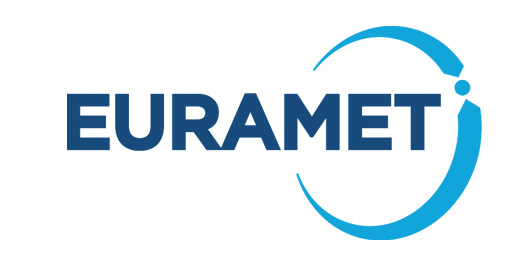Spectral measurement of aerosols from UV to NIR as part of the MAPP project (EURAMET)
Understanding how natural and manmade atmospheric aerosols impact on climate
Atmospheric aerosols arise from natural phenomena, such as salt from sea spray or sand from deserts.
They also arise from anthropogenic sources including the burning of waste or fossil fuels. Depending on their nature they can cool or heat the Earth’s surface, affect cloud formation and weather patterns. Ground-based instruments can help determine their nature but require improved metrology to determine their influence on climate change.
Challenges
Reducing the production of greenhouse gases is essential to keep global temperatures less than 1.5°C above pre-industrial levels. However, atmospheric aerosols also have a significant impact, contributing the largest uncertainty to estimates of climate change. Particles from manmade sources, such as waste incineration, tend to be dark, trapping heat and warming the Earth. With the exception of wildfires, natural aerosols, such as volcanic sulfuric particles, are generally whiter and reflect sunlight causing cooling. Models suggest the latter have counteracted around half of all greenhouse gas effects since the 1880s. Thus they have been recognised as “Essential Climate Variables” by the Global Climate Observing System.
Information on how all particles in a column of atmosphere absorb or scatter light are provided by radiometers using remote sensing techniques. These measure the “Aerosol Optical Depth” (AOD) from the ground to the “Top of the Atmosphere” (ToA) where no aerosols exist. They are calibrated against a ToA value that is extrapolated from ground-based measurements, performed at high-altitude locations during clear weather, and then relocated to their operational monitoring sites, at which time metrological traceability is lost.
In 2021 a new reference spectrum was developed that provided ToA values based on satellite observations – the “Spectral Solar Irradiance Sensor-1 Hybrid Solar Reference Spectrum” (TSIS-1 HSRS) with very reduced uncertainties relative to previous satellite-determined solar spectra. This removed the need for ground-based extrapolations, opening the possibility of calibrating instruments in the laboratory with measurements fully traceable to the SI.
Impact
For forty years Gigahertz-Optik have supplied cutting-edge instrumentation, software, knowledge and metrological solutions for optical measurements in LED manufacturing, lasers, photomedicine, imaging sensors, solar and ozone applications and many more.
The BTS sensor covering 300 nm – 1050 nm and 950 nm – 2150 nm allowed spectral measurements above 1700 nm to which it was limited before. Gigahertz-Optik have now integrated the new software into this spectroradiometer, and the company acknowledge the MAPP project, PMOD/WRC and PTB in helping to calibrate and validate it for AOD measurements. The work performed has provided significantly increased confidence in measuring the radiative properties of aerosols and their impact on climate. The AODs retrieved using laboratory calibrated instruments also showed excellent agreement with filter radiometers belonging to two atmospheric networks – with acceptance limits well within those defined by the World Meteorological Organization.

Europe’s National Measurement Institutes working together
The European Metrology Programme for Innovation and Research (EMPIR) has been developed as part of Horizon 2020, the EU Framework Programme for Research and Innovation. EMPIR funding is drawn from 28 participating EURAMET member states to support collaborative research between Measurement Institutes, academia and industry both within and outside Europe to address key metrology challenges and ensure that measurement science meets the future.
Solution
During the MAPP project a 3-week field campaign was carried out with five different types of spectroradiometers at the Izaña Atmospheric Observatory, a high-altitude primary calibration site for extrapolating ToA values due to its stable atmospheric conditions. All instruments had been laboratory calibrated, including a BiTec Sensor (BTS) from project collaborator Gigahertz Optik GmbH. This was calibrated in Gigahertz-Optik’s own ISO 17025 certified laboratory demonstrating a measurement uncertainty of 1% in AOD. During the campaign Gigahertz Optik applied a newly developed algorithm from PMOD/WRC for AOD retrieval, verified at PTB, the National Metrology Institute of Germany.
The retrieved ToA data from all five instruments were compared to the TSIS-1 HSRS, showing 99% agreement and reduced the relative uncertainties of this reference spectrum in the ultraviolet region (308 nm to 400 nm) from 1.3% to 0.8%.
Instruments designed to measure atmospheric aerosols can now be calibrated in the laboratory and transported to the area of their operation. As well as the demonstration that SI traceability can be maintained for these, the knowledge gained will also help decouple the climate impacts of atmospheric aerosols from natural and anthropogenic sources.
In the long-term this could also help geoengineering proposals regarding injecting specific aerosols into the stratosphere to reduce the global warming currently underway, as the success of these will depend on the amount of solar dimming achievable, for which SI traceability and measurement uncertainty will be crucial factors.
The MAPP project at a glance:
- Developed calibration methods and devices for SI-traceable laboratory and in-field calibrations for radiometers measuring direct solar and lunar spectral irradiance and sky radiance, in the spectral range 310 nm up to 1700 nm with an expanded relative uncertainty of 1%
- Validated the methods for zero airmass extrapolation by means of traceable ground-based solar spectral irradiance measurements with comparison to satellite-based solar extra-terrestrial spectra
-
Provided detailed uncertainty budgets for Aerosol Optical Depth for the three main sunphotometer types operating in three global networks (GAWPFR, AERONET and SKYNET)
Developed new instrumentation including a LED-based integrating sphere covering the extended wavelength range from 340 nm to 1700 nm and a narrowband tuneable portable radiation source
Adapted and extended the GRASP theoretical and software package, providing enhanced estimates of the uncertainties for all parameters retrieved from ground-based remote sensing